Sudden aggression between dogs of the same household can be alarming and downright baffling to owners. It also presents obvious safety concerns and leaves everyone (including both two- and four-footers) on edge.
Don’t worry — we’re here to help! Below, we’ll explain some of the reasons seemingly random aggression occurs between canine housemates and discuss what you can do about it.
Key Takeaways: Why Is My Dog Suddenly Aggressive with Other Dogs in the House?
- There are a variety of reasons dogs may show sudden aggression towards each other. Some of the most common causes of conflict between familiar dogs include frustration, illness, and resource guarding.
- You’ll need to clearly identify the root of the problem to restore household harmony. However, it is important to understand that the underlying tension that leads to these outbursts has usually been present for a while.
- You can sometimes help prevent these kinds of canine conflicts via normal dog management techniques and minor lifestyle adjustments. But unfortunately, you’ll often need to work with a certified canine behaviorist to address dog aggression — this is not a problem to take lightly.
Why Do Dogs Show Sudden Aggression Toward Other Dogs?
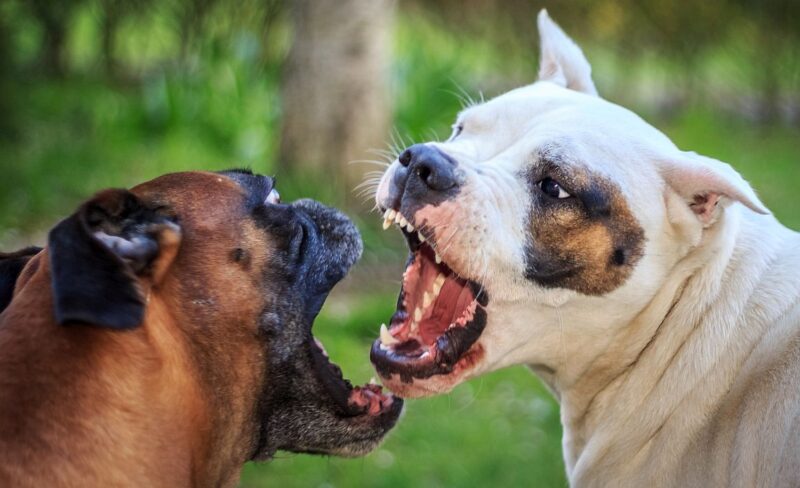
First and foremost, we’re not talking about ongoing dog aggression today.
Instead, we’re focusing on pups that normally get along, who then show sudden aggression toward one another (including cases in which the violence is one-sided, as well as those times in which both dogs are fighting or acting antagonistically).
Typical dog aggression and reactivity are different issues that require specific approaches under professional supervision. On the other hand, you may be able to address sudden, out-of-the-blue episodes of canine-on-canine aggression yourself — largely via management strategies.
But before going further, it is important to note that sudden aggression between dogs in multi-dog families can often be traced back to long-term stressors.
These lingering issues mount on a daily basis, until the dogs are suddenly set off by a sudden “straw that broke the camel’s back” interaction, resulting in a growl, snap, bite, or in the worst cases, a full-fledged fight.
Think of it like something poking at you repeatedly until you finally react.
Even when these outbursts seem to come out of nowhere, there is usually a history of antagonism or frustration between the dogs. However, dogs rely heavily on body language to communicate, and it’s not uncommon for owners to miss the signs of a brewing confrontation.
The most common causes of sudden aggression between doggy roommates fall into any of several buckets, which we’ll discuss below.
Illness or Injury
Illness and injury are both common causes of canine conflict.
It’s easy to understand why: If your dog isn’t feeling his best, he’s bound to be cranky. Your other pup can then aggravate the ill or injured doggo, and earn a snap or warning growl in return.
And while this is can happen with any dogs, it’s a particularly common issue between younger and older dogs. The youngster just wants to play, play, play, while the senior — who’s often feeling achy or otherwise unwell — just snaps when he’s had enough. Conflict is not terribly surprising in these situations
So, whenever you see unexpected aggression between puppers who live in the same house, it’s a good idea to bring both dogs to the vet for a thorough examination. This can help rule out health-related causes.
Resource Guarding

The guarding of toys, furniture, or food can be a problem in multi-dog households, particularly when a new doggo joins the family. In these cases, one of your dogs fears losing something of value to the other dog.
The reactions will tend to escalate over time as the stress builds, moving from growing to biting if the situation is not corrected. It’s essential to address these issues ASAP if you want to get your family dogs to stop fighting.
Resource guarding requires all family members to be onboard with soothing the stressed dog. He should be made to feel secure that there are enough resources to go around and that he’s not going to lose his favorite chew, toy, or dinner to the other pooch.
Also, he should never punished for reacting negatively — this can just worsen the anxiety he’s feeling and lead to additional conflicts.
Instead, just separate your dogs during feeding, when distributing treats, or toy-chewing time, and never leave high-value items such as bones out. However, resource guarding is a serious issue, and it’ll usually be wisest to work with a certified canine behaviorist anytime resource guarding takes place.
Household Stress
A shift in routine, new family member, or your own worries can stress your dogs out. Dogs thrive on routines, and disruptions in their daily life can take a toll on our furry friends.
We know it’s hard (and sometimes downright impossible), but try to make these transitions as smooth as possible. Ensure that your dogs’ schedules and surroundings remain as similar as you can, and make any necessary changes gradually to help avoid creating anxiety.
New people to the home (such as new romantic partners, new roommates, or older children returning home after long absences) can also lead to stress.
Not to mention that new individuals in your dog’s life may treat the dog differently than you, which can end up resulting in a dog disliking a certain family member or visitor.
In such cases, you’ll want to continue to keep their daily regimen as normal as possible, and do everything you can to foster a positive relationship between both dogs and the new person.
Frustration
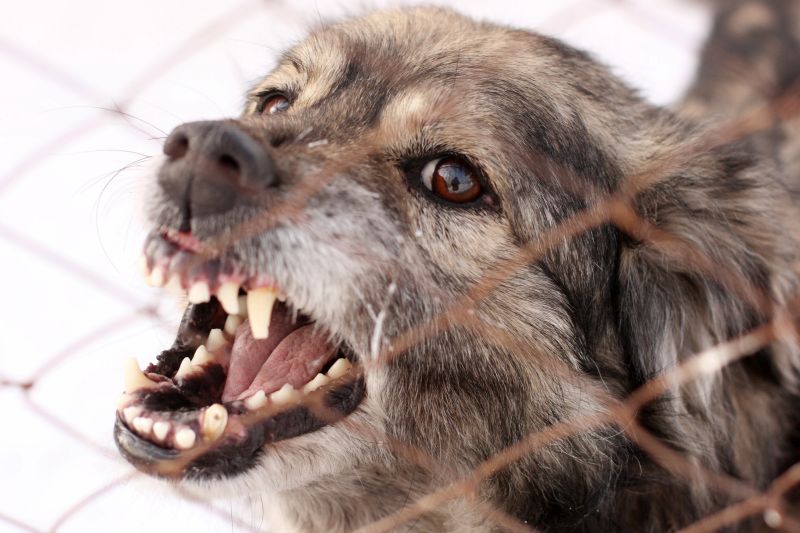
Frustration can increase the odds of conflict among anyone — including our dogs!
For example, dogs who lack sufficient interaction with their humans or fail to get enough daily exercise may act out through aggression. Imagine how aggravating it must be to be trapped inside all day or having to go for long stretches without your favorite person!
We’d probably get pretty touchy too.
One of the best ways to treat frustration is through action, such as implementing more daily walks or backyard play. In some cases, this will be all that’s necessary to ratchet down the temperature between the pups.
Another few other ideas you may want to try include:
- Hire a dog walker for a midday stroll if you’re stuck at work all day.
- Consider interactive dog toys to keep your canines’ brains buzzing.
- Set up “scavenger hunts” to give your doggo something to do.
The goal in any of these cases is to get your dogs’ bodies and minds moving through engaging interactions and exercise.
Annoyance
It’s not unusual for two dogs to not see eye to eye when one is a young pup and the other is a tired old senior. As mentioned above, physical ailments associated with an aging canine (such as degrading eyesight, arthritis, and joint pain) can make a dog grumpier and more on edge.
However, it’s worth noting that puppies can be just super darn annoying!
Just as a 60-year-old grandfather probably has little interest in hanging out with a bunch of young frat boys, many greying canines have little patience for a pup’s misadventures. And it isn’t fair to put all the blame on the senior dog in these cases – pups are notoriously obnoxious and will often ignore an older dog’s requests to be left alone. Make sure to advocate for your senior dog and avoid letting the pup harass him!
Even two dogs of similar ages might simply have different play styles and personalities that cause conflict. As humans who are not always well-versed in canine body language, it can be easy for us to blame a dog fight on the dog who let out the first nip. But in many cases, the other dog may have been subtly haranguing and pestering the other dog for a long time already.
This is all simply to say that you shouldn’t take sides too quickly and remember that it’s common for us to miss some of the larger context that happens around dog-on-dog conflicts.
Redirected Arousal
Sometimes, redirected arousal is linked to conflict among dogs who know each other. This occurs when one dog reaches a certain level of arousal or excitement and then redirects his energy negatively through biting the other dog (or, in some cases, a person).
This is sometimes caused outdoors by invisible fences — especially when these devices are first put into use. Another common scenario involves fence-fighting behavior between dogs on either side of a boundary.
In these or similar cases, the result is similar to the dog frustration fights discussed earlier: One dog turns his frustration on another dog, resulting in a bite or all-out fight.
Note that these kinds of redirected-arousal conflicts can also occur in happy times, when your pups are excited. This may happen when the doorbell rings or while you’re preparing for a walk.
In cases of redirected arousal, the key is preventing your dogs from ever reaching that level of arousal and positively harnessing the excitement.
In other words, try to lower the overall excitement level and give them both something constructive to do. This may mean teaching your dogs the doorbell means getting treats in their kennels or that sitting on their beds is required before a walk.
However, in other cases, it may require avoiding the situation entirely, such as going inside when the neighbor’s dog is out or getting rid of the underground fencing system. This is another case in which you may need the help of a certified behaviorist to determine which strategy is wisest.
Fear
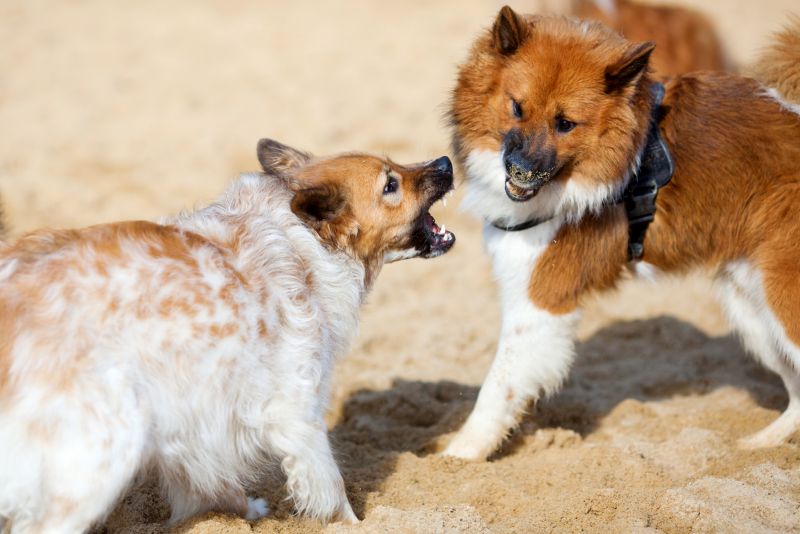
Some dogs display aggressive behavior when fearful, such as during a storm or fireworks. Others may attack their doggo siblings or roommates following punishment or other harsh training strategies.
Once again, aggressive reactions in these cases are completely understandable — we all get edgy when frightened.
In these situations, you want to alleviate your dogs’ anxiety to eliminate the negative fear response.
There are a variety of ways to reduce your dog’s anxiety, but it’s often necessary to match your management strategy with the triggering event or stimulus.
In the event of storms or fireworks, for example, you may need to invest in a Thundershirt, play calming music, or in extreme cases, opt for prescribed dog anxiety medications. If the cause of the anxiety is a recent move or change in lifestyle, you’ll want to provide plenty of comfort and reassurance to your pup and also try to implement some familiar aspects of daily life (such as a routine walk every day at the same time).
Regarding dogs who also act out after harsh punishment or training techniques, our advice is simple: Stop doing that. Yelling or scolding your dog (never mind doing even worse things) will not only prove unproductive and unlikely to yield the desired results, they’re also just disrespectful to your dog.
Dog-Dog Dominance
Before going further, let’s be clear about one thing: Dogs may try to dominate other dogs or establish hierarchical relationships, but they do not do these things with humans. Full stop.
So please, for the love of dogs, do not “alpha roll” your pup or engage in any similarly rude and outdated “techniques.”
But among each other, dogs may occasionally have tiffs over hierarchy and their place in the “pack.”
These tensions — like most aggression stressors — build over time. Relationships are like tectonic plates in a way, shifting as this pressure builds and builds until something triggers a reaction finally. Your dogs may have multiple negative interactions that you don’t notice, but they most certainly do.
Solving dog-to-dog issues can be tricky, but it starts with establishing respect and creating “cool down” time away from one another to relax and work things out.
This might be napping separately or enjoying backyard time alone if one dog pesters the other. Pack walks and sniffari adventures are also helpful for strengthening their bond again, too (as long as they don’t aggravate either dogs’ triggers).
How Can You Help Your Dogs Get Along Better?
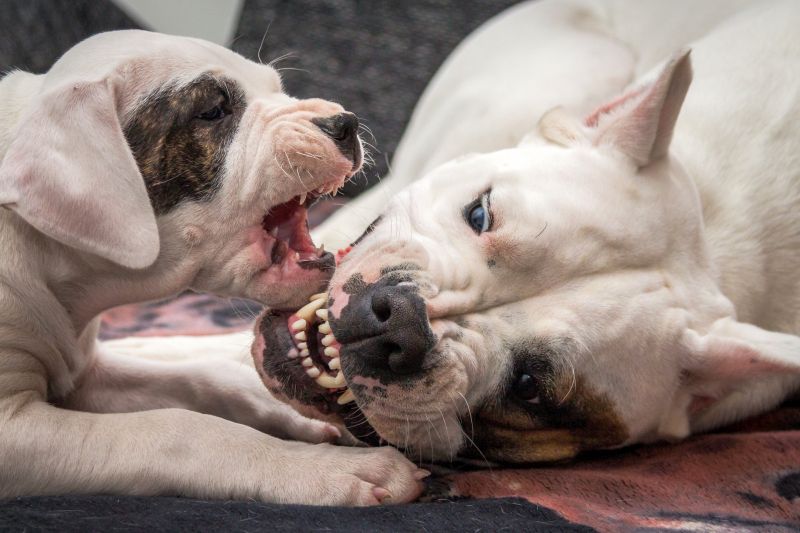
Building back your pups’ once-solid relationship will take some work, but it’s possible in many cases.
As with most canine issues, this is a marathon and not a sprint, so you shouldn’t expect everything to be hunky-dory in no time. You need to take a careful approach and cover all your bases to ensure a happy household once again.
However, if you’re dealing with two dogs who have never really seen eye-to-eye, you might have to rely on management strategies to keep everyone safe and happy — check out our guide on how to live with two dogs who don’t get along for more information on how to manage that arrangement.
Learn Dog Body Language
In a multi-dog family, it’s vital to learn dog body language and know the signs of imminent danger or fighting to prevent further issues from happening. When dogs are having a problem with one another, they don’t always “voice” it through growling or barking, so you need to pay attention to their bodies.
Signs of trouble include:
- Whale eyeing
- Stiff movement
- Rigid tail movements
- Snarling or growling
- High tail wagging
- Bared teeth
- Lunging
- One dog placing his head over the shoulders or back of another
- Direct head-on, eye contact
If an actual dog fight ever occurs, never try to separate your dogs using your hands. You may suffer a very serious injury, which will only make the situation worse.
It’s important to note that dog fights often sound a lot worse than they are and are seemingly over before they begin, but that doesn’t mean you should even put yourself in the middle of one.
Instead, grab your dogs’ attention by yelling or blasting an airhorn. You can also throw water or a blanket on the dogs to separate them. If all else fails, use a break stick or other large, hard object to wedge the dogs apart, or use the “wheel barrow” technique if you have a friend who can help (both people essentially grab the legs of a different dog and walk backwards).
Remove Underlying Stressors
Once you know the warning signs of trouble, work on eliminating the underlying stressors that led to the breakdown.
This essentially means addressing the issues and implementing the strategies we discussed earlier, including:
- Sort out any health issues your dogs may have
- Set up physical boundaries where they are lacking (such as during feeding time)
- Reestablish a cohesive pack where each dog respects the other’s personal space.
This can also mean giving your dogs a break from one another if they’re getting on one another’s nerves through the use of indoor gates or rotating crate time where one dog is crated for a few hours to rest while the other gets play time and attention from you, and then switching the setup.
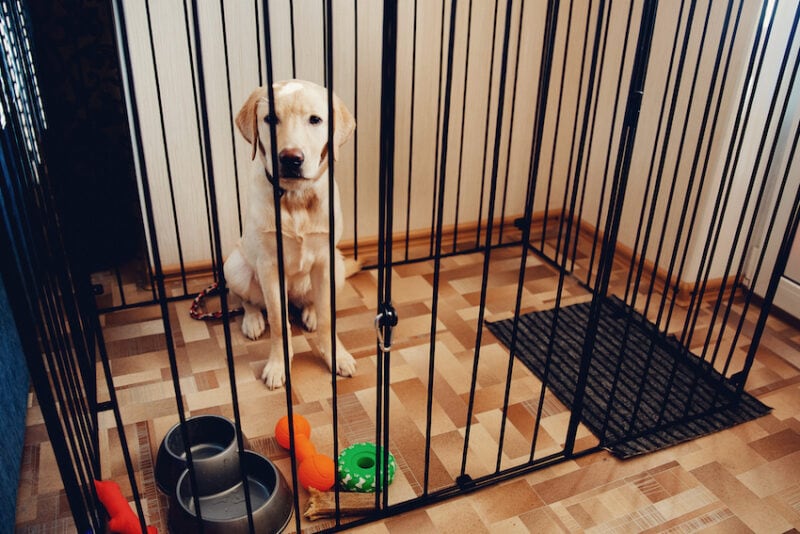
While it certainly isn’t ideal, some owners live on a 24/7 dog rotation schedule that implements gates, crates, and household management to ensure that two incompatible dogs are never (or rarely) in the same space at the same time. This isn’t an easy system to manage and can be stressful for the dogs and humans in the home, but it is a possibility and can at the very least be done temporarily while you assess all your other options.
Avoid Trigger Stressors
To avoid dog-on-dog conflict, try to dodge trigger stressors at all costs. These are the igniting instances that created the burst of aggression.
For example, if your dogs are snapping at one another around high-value chews or redirecting their frustration during excited backyard play, you’ll want to sidestep these issues.
Some novice owners mistakenly think that they need to let the dog perform the unwanted behavior (in this situation, snapping at the co-habitant dog) and then punish the dog to show that the behavior is unacceptable.
However, this strategy can often backfire, can increase irritation or fear associated with the other dog, and allows your dog to practice the undesired behavior. Whenever dealing with an undesired behavior, your goal should be to prevent the dog from practicing and repeating the behavior while finding an alternative behavior for the dog to engage in instead.
So for this particular situation, you may try distributing treats when the dogs are separate, and make sure to intervene and redirect them when they’re getting over-excited. You may also need to keep all chews, toys, or trigger items out of sight for dogs who resource guard.
It might also mean enjoying one-on-one time in the yard between you and one of the dogs at a time, rather than playing with both dogs together. Doing so will also help you avoid any problems with uncontrolled variables, like the neighbor’s dog, who is known to get your dogs riled up.
Increasing Exercise and Interaction
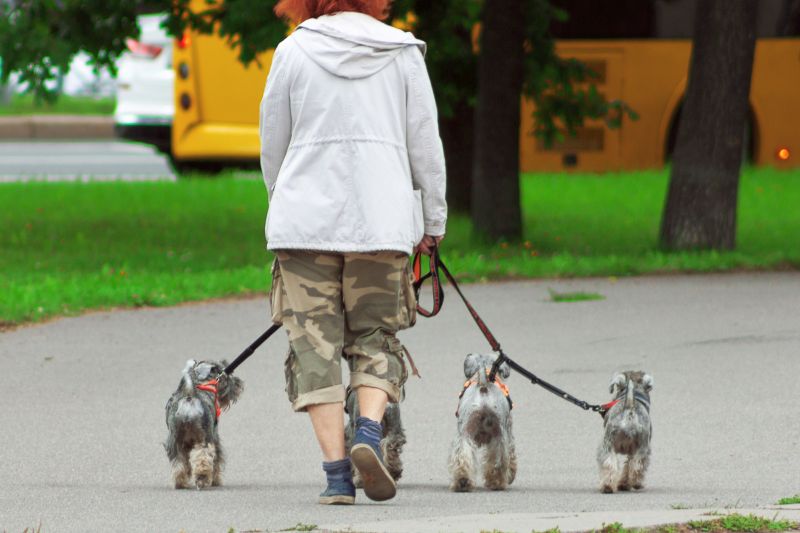
It is remarkable how many different problems additional exercise can solve. So, if your dogs are fighting and lack sufficient daily physical and mental exercise, now is the time to pump it up.
Just make sure the exercise if fun! You are trying to wear your pooch out the same way your child may be exhausted after a day at the pool. You don’t want to make your dog trudge on for mile after boring mile, just to make him tired.
Simple walking together will often suffice if you give Spot plenty of time to sniff the roses (or, more likely, pee spots). It can also help restore a pack bond and burn off energy at the same time. Fetch or tug-of-war are both even better (though they may tire you a bit too). You can also look into canine sports like dock-jumping or agility to get their hearts pumping.
Never underestimate the power of touch, either. In addition to telling your dogs how handsome they are, make sure you shower them in rubs and pats. Petting is a calming, reassuring interaction between you and your dogs.
Manage Anxieties
Whether caused by storms, fireworks, or life itself, anxiety is never fun. Dogs with anxiety need to find relief in some form to break the cycle of fear and fear-based aggression.
In some cases, this may mean treating your dogs with medications, natural remedies like CBD oil, or other anxiety-busting tools. Just be sure that you always check with your vet before giving your pups any supplement.
If negative training methods or tools cause anxieties, stop using them entirely and focus on positive reinforcement training to build up your dogs’ confidence and establish a healthy relationship with you. Essentially, this means teaching your dogs how to be the best dogs they can be through reward-based training.
Make sure there is enough love to go around, too, by giving both dogs equal attention.
It can get tricky if you have a puppy demanding love while an older dog hides away to avoid the ruckus, but get creative. Separate them as needed to ensure each gets enough one-on-one time. Play puzzle games with your older dog while your puppy naps, and then practice tricks with your puppy once he wakes up and your older dog is ready to chill on the porch and watch the world go by.
The sky’s the limit — just try things until you stumble upon a working solution.
Create a Routine
There’s a reason pups function as wireless alarm clocks on the weekend: They thrive on a schedule.
Your dogs may only be a physical part of your life before and after work, but you are their whole life. It’s important to remember this when you get frustrated with them acting out or getting snippy with one another.
So, work on keeping your schedule as consistent as possible, so your dogs don’t have to stress about why you’re not home for their daily walk or why dinner is three hours late. Consider things like your puppers’ walking, eating, and playing schedule just as important as your work or exercise routine.
Talk to Your Vet
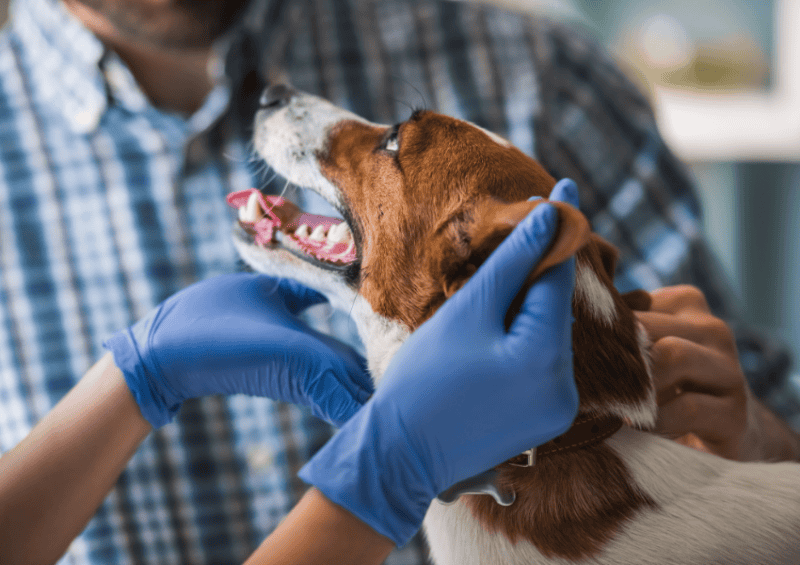
As we’ve discussed, you need to rule out medical conditions in both dogs when any aggression is displayed. Not only can aggression be a sign of pain, but it could also be a symptom of a condition, such as hormonal or metabolic imbalances.
Don’t have easy access to a vet? You may want to consider getting help from JustAnswer — a service that provides instant virtual-chat access to a certified vet online.
You can discuss the issue with them, and even share video or photos if need be. The online vet can help you determine what your next steps should be.
While talking with your own vet — who understands the ins and outs of your dog’s history — is probably ideal, JustAnswer is a good backup option.
Contact a Certified Dog Behaviorist
If you can’t identify what the issues are between your dogs or if you’re not confident in your abilities to develop an improvement plan, reach out to a credentialed animal behaviorist.
Often, trained professionals will not only have better solutions to your canine problems, but they will pick up on subtler cues your dogs provide.
This is also essential if your dogs have caused serious harm to one another in the past. Leave these extreme cases to the professionals to ensure a positive outcome.
Last Resort Options for Dogs Who Won’t Get Along
Despite your best efforts (even with professionals), some dogs just don’t get along.
In these instances, your only option for everyone’s safety and well-being is to keep the dogs apart on a more-or-less permanent basis.
This may mean separating them using crates, kennels, or gates for small dogs, or it may ultimately mean rehoming the dog. In fact, if death or serious bodily injury is likely, the latter is the best option for all involved. Not only will catastrophe be avoided, but both dogs will be happier in the long run under separate roofs.
We understand that this is neither easy nor ideal, but it may — in rare cases — be the only viable solution.
***
Sudden aggression is always rattling, but in most cases, you can resolve the pooch problems with a few changes. Have you had any issues between ruffing roommates? What changes did you implement? Let us know in the comments.
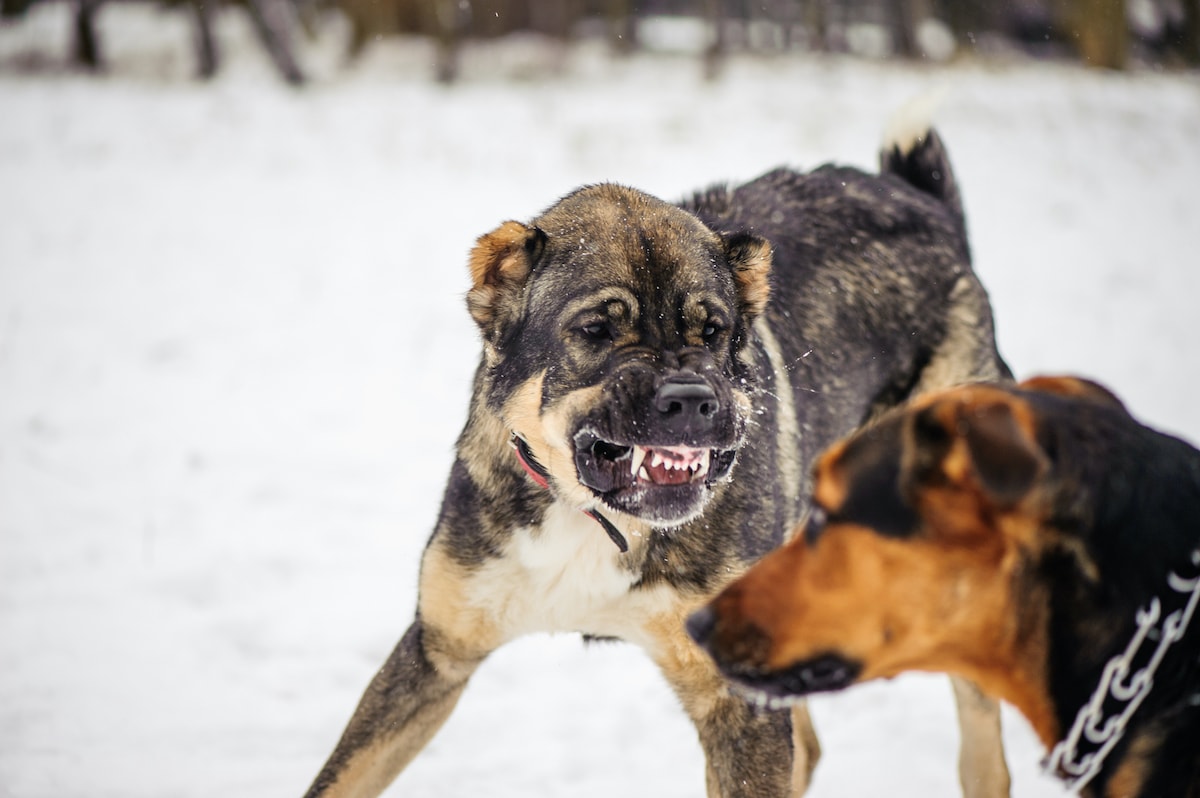

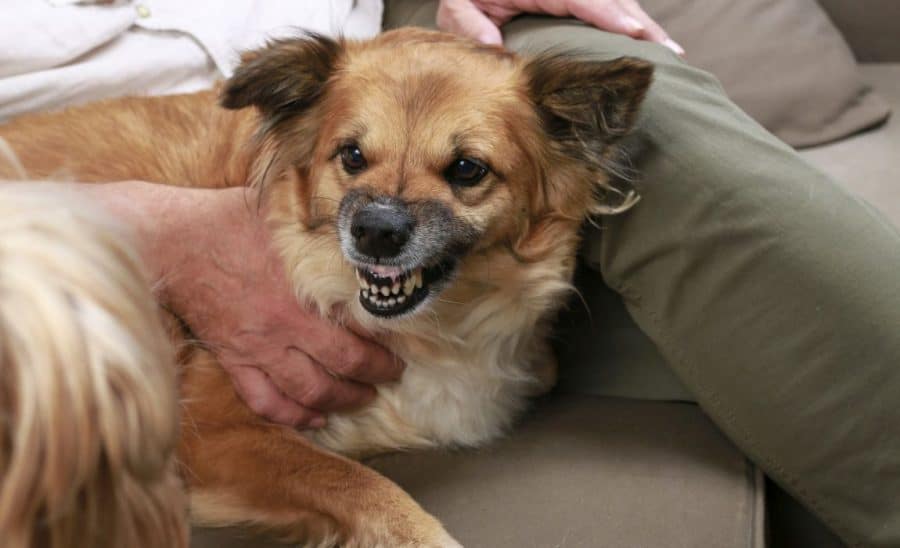


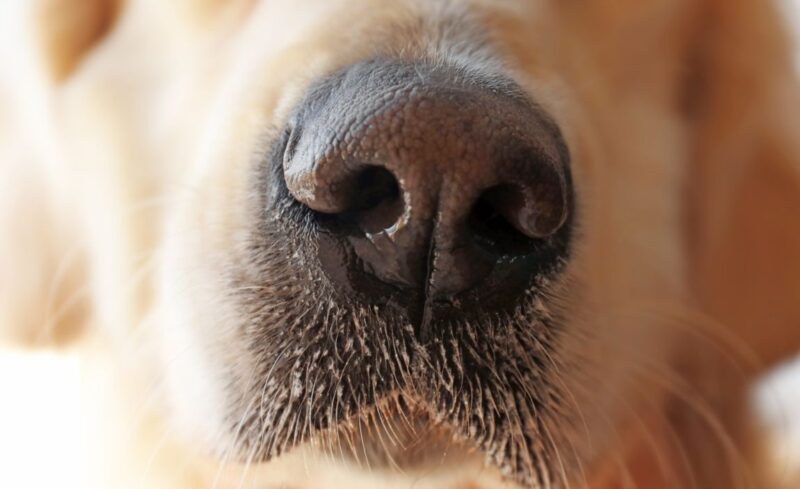
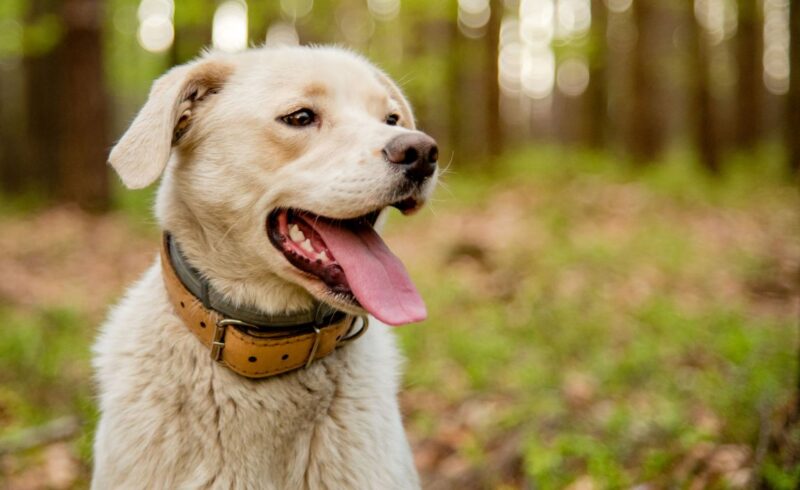
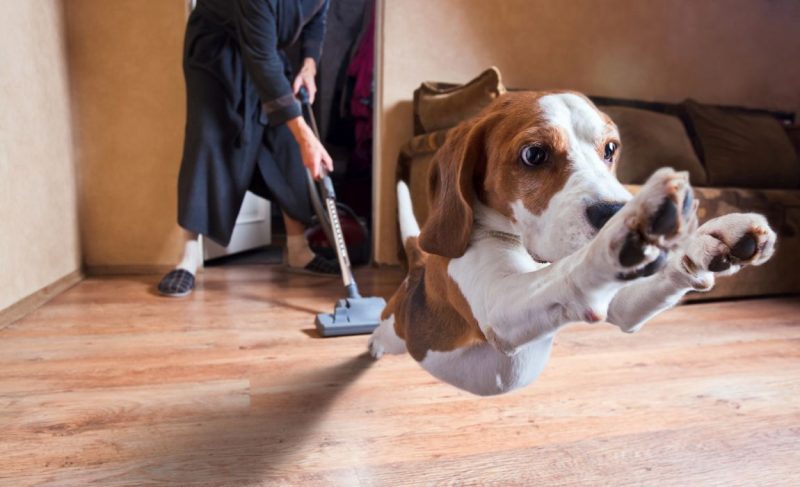
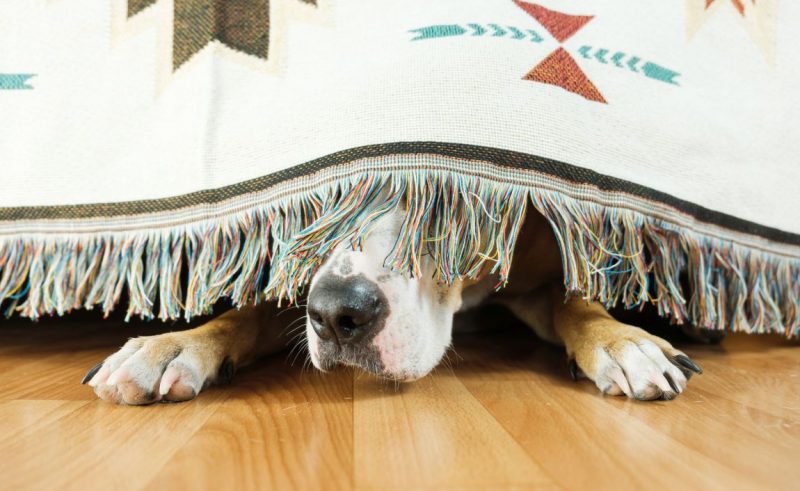
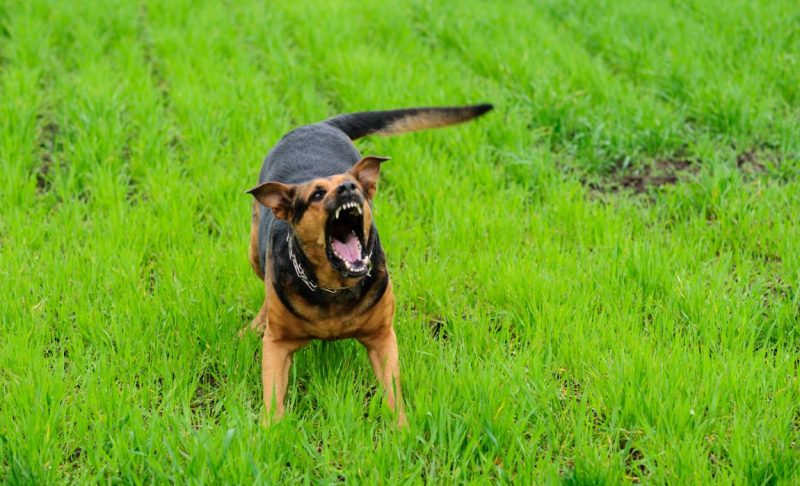

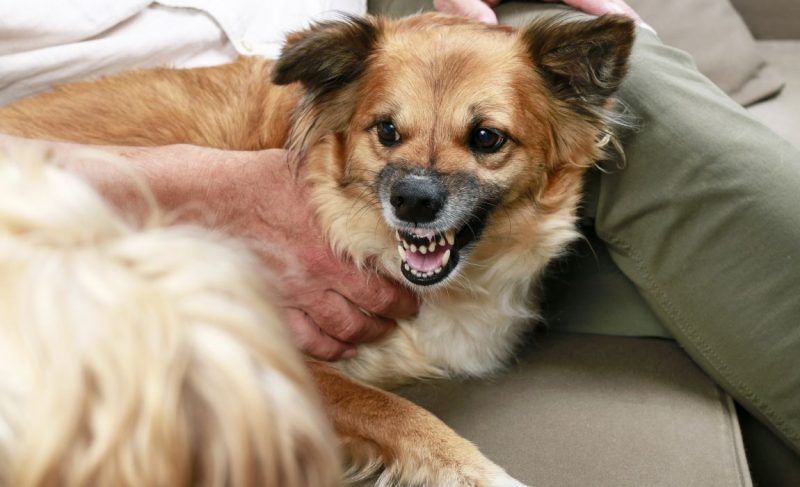

Leave a Comment